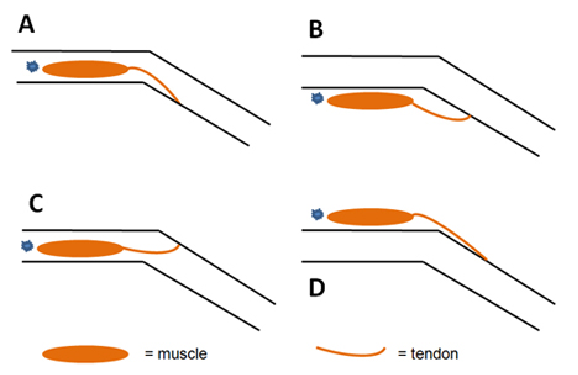Proteins known as ________ function to refold partially denatured proteins
A) histones
B) chaperonins
C) HU proteins
D) histones and chaperonins
Answer: B
You might also like to view...
Structures in an organism that are reduced in size, complexity or strength compared to related
organisms and have no current function are called
a. homologous b. vestigial c. mutualistic d. fossil e. convergent
The figure below represents a joint in the hind leg of a grasshopper. The exoskeleton of the leg is indicated by the two pairs of parallel black lines. A muscle that moves this leg is fixed to the skeleton at the end marked with a blue star. When the muscle contracts, it will pull on the tendon at its opposite end. Which configuration shows the most likely arrangement of the exoskeleton and a muscle that increases the flexion of this leg?

A. A
B. B
C. C
D. D
Clarify Question
· What is the key concept addressed by the question?
· What type of thinking is required?
Gather Content
· What do you know about the orientation of a muscle in a joint? What other information is related to the question?
Choose Answer
· Given what you now know, what information is most likely to produce the correct answer?
Reflect on Process
· Did your problem-solving process lead you to the correct answer? If not, where did the process break down or lead you astray? How can you revise your approach to produce a more desirable result?
Four of the five choices listed below relate to
flatworms. Select the exception. a. proglottid b. parapodia c. scolex d. flame cell e. first group to develop a mesoderm
Which of the following is false about dynamic instability of a microtubule end?
A) During a growth phase, assembly of GTP-tubulin is faster than incorporated GTP is hydrolyzed, forming a GTP-cap. B) During a catastrophe phase, hydrolysis of incorporated GTP is faster than GTP-tubulin addition, forming a GDP-cap. C) During rescue, GTP-tubulin assembles fast enough to reestablish a GTP cap. D) Each end of a microtubule can undergo dynamic instability independently. E) A, B, C, and D are true.